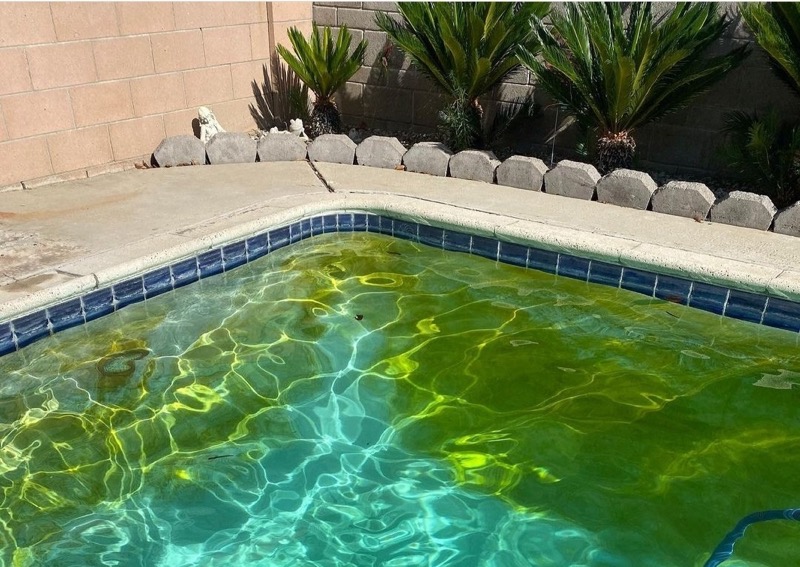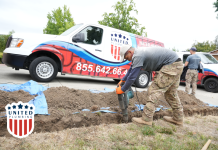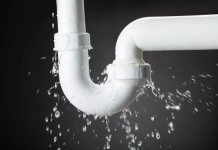Is there a yellow-coloured cloud in your home swimming pool water? If yes, then it might be mustard algae. If it’s not controlled, it might damage your pool a lot. In order to remove mustard algae, you will need the right information and tools. In this article, we will help you understand what mustard algae is, how to prevent it, and how to get rid of it.
What are mustard algae?
You must already know what green algae are. It is slimy and can usually be seen in the form of gross patties clinging to the walls of your pool. Mustard algae are similar to it, only in a different colour. It is usually found in southern climes. More often than not, people mistake it for a stain, dirt, or sand in the family. Mustard algae belong to xanthophytes, a microbe family. These are persistent and chlorine-resistant.
They will attach themselves to the walls of your pool and even your equipment. It can even survive outside your pool, meaning that even your bathing suits aren’t safe. If you suspect that there are mustard algae growing in your swimming pool, you should start working on getting rid of it immediately.
Another common issue with mustard algae is that it is hard to identify. Since it is not the slimy algae you usually come across, you might mistake it for dirt or algae. Also, since it is chlorine-resistant, it is more likely to return. Simply brushing it away won’t work, as it would grow back in the same place. A Fibreglass Pools Gold Coast builder can help with these types of issues.
What causes mustard algae?
When organic material is washed down into your pool water because of heavy rain, some algae might get spilled into the pool as well. It can affect the water and attach itself to your swimwear. After a lot of people have swum in the same contaminated swimming pool, you might get a mustard algae outbreak in your hand.
Depending on the environment, location, and your specific situation, the algae can spread rapidly. Here are a few factors that might impact the algae bloom’s speed:
- Sunny days
- Out of balance pool water
- High carbon dioxide and nitrates levels
- Not enough circulation
- Improper filtration and sanitation
How to get rid of mustard algae?
Once you know for sure that your pool has mustard algae, you must remove it immediately. Here are a few steps that will help you with the same:
- Remove and decontaminate the pool accessories
All the items that are not attached to the pool must be removed immediately. This includes any pool accessories, floats or toys. Mustard algae can latch onto your swimsuits, equipment, or toys. If you don’t sanitise them, mustard algae will be reintroduced to your water.
Use a multipurpose cleaner for disinfecting these items, as it will kill the mustard algae and not cause any damage to your possessions. Do not use bleach or any cleaner with bleach, or else your items will be discoloured. For swimsuits, a colour-safe laundry detergent is the best choice to kill off mustard algae.
- Remove the algae from your pool
To remove the algae hanging on the walls of your pool, brush it off. Before you move on to using the pool vacuum, let everything settle. You should use the filter’s waste mode so that the vacuumed water isn’t released back into the swimming pool. In the end, top off your pool using fresh water.
- Test and balance the chemistry of your pool
It is crucial to ensure that your pool water is balanced properly. The alkalinity level should be in the range of 60 to 120 PPM, and the pH should be between 7.2 and 7.4. Having balanced pool water will ensure that it is ready for chlorine shock. If your indoor or outdoor pool uses trichlor, keep the cyanuric acid PPM levels between the range of 20 to 40 PPM. if your pool’s cyanuric acid level is high, your sanitation will be ineffective. It can even impact your alkalinity readings.
- Scrub the walls and floor of the pool again
Brush the floor and walls of your pool again before shocking the pool water. For a plaster pool, we recommend using a steel bristle brush. For a vinyl pool, nylon brushes will be the best. Find some algaecide at your local hardware store or online and add it to your water. Brush your swimming pool again. Even though it might seem repetitive, it is important to rid your pool of mustard algae.
- Superchlorinate the pool
Superchlorination or shocking the pool is a process where more chlorine is added to the pool than what is normally required. Thanks to this process, the chlorine manages to burn through the resistant chemicals, compounds, oils, and algae. You can use calcium hypochlorite for superchlorinating your pool or sodium hypochlorite. The choice to use a tablet or liquid bleach is up to you. For best results, add the shock to the water at night, and leave the pump and filter running for a day until the mustard algae are completely gone. Make sure that you read the instructions provided by the manufacturer for improved efficiency. It is important that you keep the circulation running. We recommend using the automatic cleaning settings.
- Continue to monitor and adjust chlorine levels and brushing
Dedicate the next three days or more to brushing the walls of the pool. This will enable the chlorine to kill the algae. Also, in order to ensure that the chlorine remains highly effective, you have to keep testing the pool water and adjusting the levels.
Conclusion
Only when the algae are gone can you put the toys and floats into the pool. Mustard algae can be very frustrating to deal with. So, if you see it growing in your pool, start getting rid of it immediately. In some cases, just one shock might not work. You will have to continue with pool shocking. Mustard algae latch onto everything present in your swimming pool. To avoid reintroducing algae into the pool, sanitise each item well. Yes, having mustard algae in your pool can be extremely difficult to remove. However, there is no need to panic as with the above-mentioned methods, you can get rid of this contaminant and have the pool clean once again.









